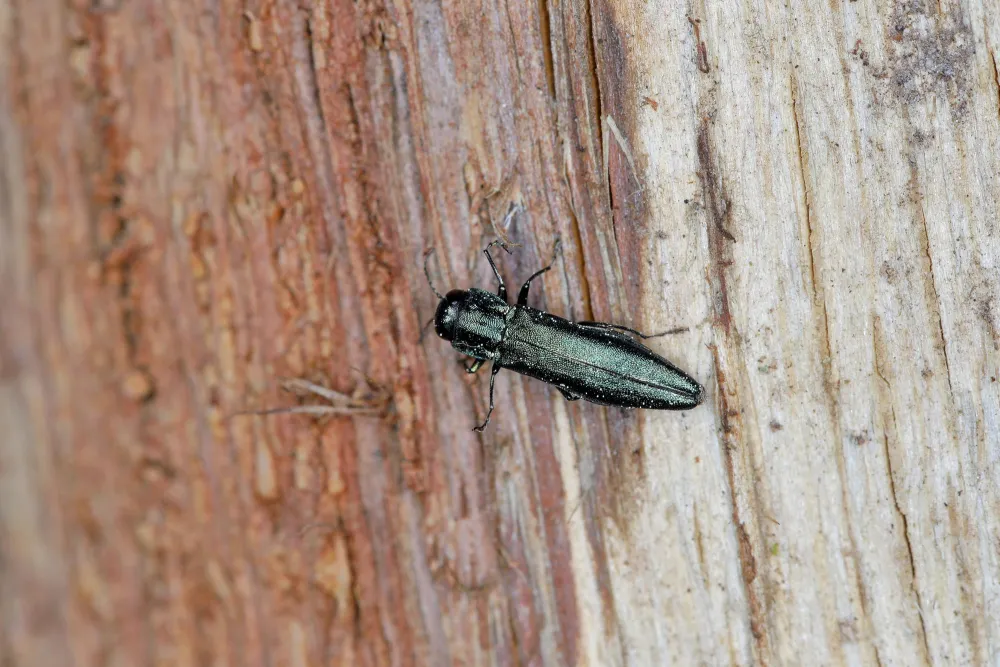Now live: The 2025 Canopy Report. Learn how Americans see trees. GET THE REPORT
Bulletin
How to Fight the Emerald Ash Borer
The emerald ash borer is one of the most notorious invasive insects in American history. From the discovery of this Asian species in the Detroit, Michigan, area in 2002, it has spread throughout most of the Midwest and Middle Atlantic states and is heading in all directions.

If your community does not yet host this destructive beetle, it probably will in the future.
Ash is an incredibly important tree. There are 16 native species in the United States and dozens of commercially available cultivars. Foresters estimate there are over 8 billion ash trees in rural forests worth well over $280 billion dollars. The wood of this forest tree is highly valued for its strength and elasticity, the very reasons it is the traditional wood used for baseball bats and often for bows, tool handles, guitars, and many other products.
In urban areas, ash has been one of the nation’s most popular trees for planting along streets, in parks, and in shopping center parking lots. When Dutch elm disease decimated huge numbers of our nation’s most graceful street trees, ash was often the tree of choice for its replacement. In some communities, up to 40% of the inventoried trees turn out to be ash species or cultivars. It has been a tree that has served extremely well providing relatively fast growth and the ability to withstand the harsh conditions of almost any urban environment. And it is estimated that a 12-inch diameter ash tree provides $131 every year in ecoservices such as filtering air pollutants, reducing stormwater runoff, and conserving energy.
When ash disappears, wildlife suffer along with the rest of us. The seeds of this tree are a boon to birdlife; many native butterflies and moths utilize its leaves; and some 44 species of arthropods are said to feed exclusively on ash trees. It is fair to say that without ash trees, ecological relationships will be affected in ways we may not yet understand.
In this bulletin, we summarize what is known about the emerald ash borer and present a case for fighting back against this epic threat.
In This Bulletin
Here’s what’s inside:
- Know Your Enemy – what to look for and how they spread
- The Life Cycle of Emerald Ash Borers – each stage explained
- Is There Any Hope? – the good news and bad news about treatment and control
- Tree Injections and How They Work – one method of treating trees
- Communities are Fighting Back – Milwaukee’s approach
- A Citizen Takes Action – the power of an individual’s actions
- Other Bad Bugs – additional insects to watch for
